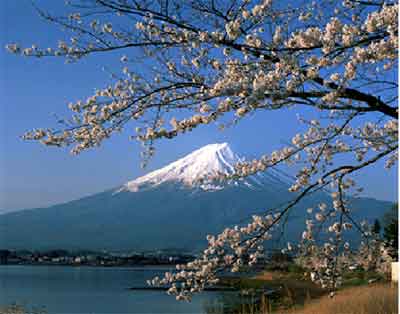Tourism & its changes
Tourism is an extremely wide-ranging industry, encompassing the travel, accommodations, transportation, restaurant, souvenir and other businesses. Here are some goals set by the Japan Tourism Agency:
- Increase the number of overseas visitors to 10 million by 2010, with a long-term goal of equalling the number of Japanese overseas travellers (7.33 million in 2006)
- Increase the number of international conferences held in Japan by over 50% by 2011, with the aim of becoming the top host nation of international conference in Asia (168 conferences in 2005)
- Increase the duration of Japanese domestic travel by 1 night per person by 2010, to 4 nights annually (2.77 nights in 2006)
- Increase the number of Japanese overseas travellers to 20 million by 2010, with the aim of promoting mutual international exchange (17.53 million in 2006)
- Increase domestic travel spending to ¥30 trillion by 2010, through the creation of new demand brought about by improved environment for smooth travel and diverse service offerings by increased productivity in the tourism industry (¥24.4 trillion in 2005)
Now we look at some of the impacts caused by tourism in Japan:
· Economical Impact
Its economic impact is also quite large, and the FY2008 estimate of production impact including secondary economic ripple effect is 5.3% of the GDP (¥972 trillion) or ¥51.4 trillion. In terms of its effect on employment, the industry is estimated to employ 4.3 million, 6.7% of the total employment figure of 64.45 million.
· Cultural impact
Tourism is an interface for cultural exchange, facilitating the interaction between communities and visitors (domestic and international). Being rich in cultures and traditions, tourism brought about an immense influx and exchanges of cultural perspectives.
However there is a risk of commercialization of local culture. Tourism can turn local culture into commodities when religious traditions, local customs and festivals are reduced to conform to tourist expectations and resulting in what has been called "reconstructed ethnicity".
Also there is the danger of adaptation to tourist demands. Tourists want souvenirs, arts, crafts, cultural manifestations. In many tourist destinations, craftsmen have responded to the growing demand and have made changes in the design of their products to make them more in line with the new customers’ tastes. The interest shown by tourists can contribute to the sense of self-worth of the artists and help conserve a cultural tradition. Cultural erosion may occur in the process of commercializing cultural goods.
· Environmental impact
With 14 World Heritage sites, Japan certainly has a rich cultural environment. With the development of many places like Okinawa and Hokaiddo to meet the needs if increased demand from tourism, there is no arguing that the environmental impact is huge. Going by the efficient and speedy transport system in Japan, it is with no doubt that tourism has brought a slew of positive changes to the environment.
Sources:
http://www.tourism.jp/english/statistics/inbound.php
http://www.mlit.go.jp/kankocho/en/about/keiki.html
http://www.coastlearn.org/tourism/why_socioimpacts.html
http://www.mlit.go.jp/kankocho/en/kankorikkoku/kihonkeikaku.html
https://www.msu.edu/course/prr/840/econimpact/bills.jpg
http://multiculture.com.au/myimages/impact.gif
http://www.econewonline.com/images/img_environmental_impact.jpg




No comments:
Post a Comment